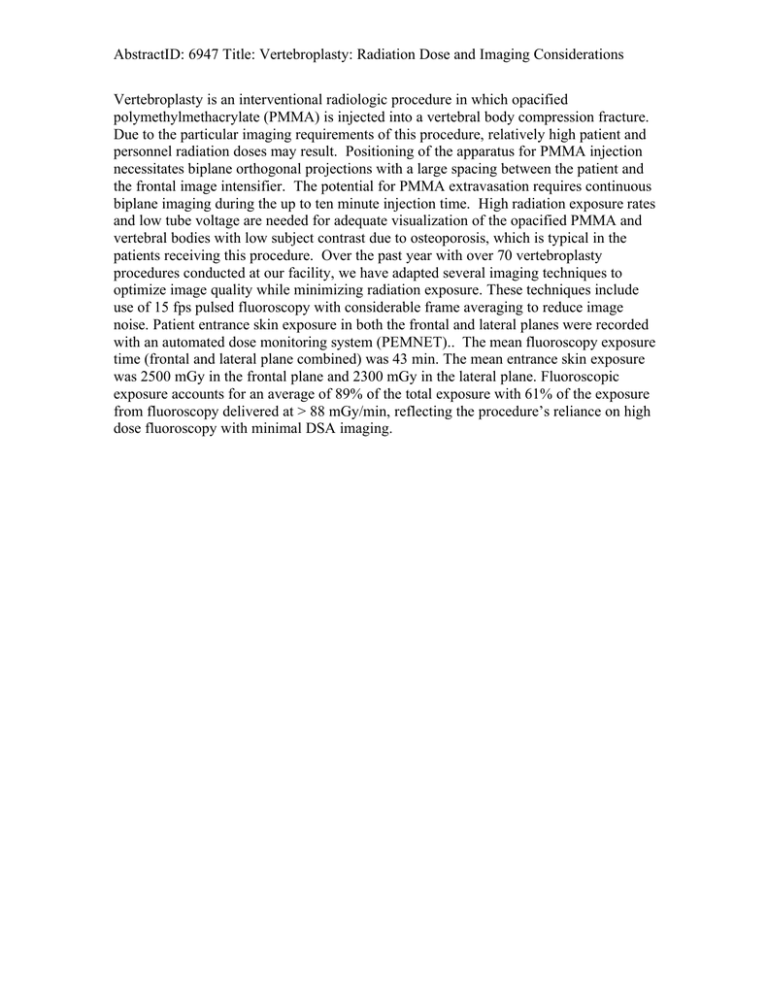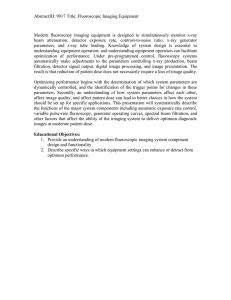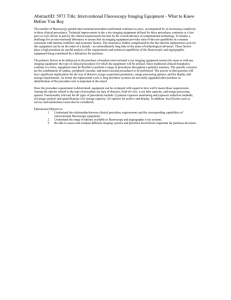AbstractID: 6947 Title: Vertebroplasty: Radiation Dose and Imaging Considerations
advertisement

AbstractID: 6947 Title: Vertebroplasty: Radiation Dose and Imaging Considerations Vertebroplasty is an interventional radiologic procedure in which opacified polymethylmethacrylate (PMMA) is injected into a vertebral body compression fracture. Due to the particular imaging requirements of this procedure, relatively high patient and personnel radiation doses may result. Positioning of the apparatus for PMMA injection necessitates biplane orthogonal projections with a large spacing between the patient and the frontal image intensifier. The potential for PMMA extravasation requires continuous biplane imaging during the up to ten minute injection time. High radiation exposure rates and low tube voltage are needed for adequate visualization of the opacified PMMA and vertebral bodies with low subject contrast due to osteoporosis, which is typical in the patients receiving this procedure. Over the past year with over 70 vertebroplasty procedures conducted at our facility, we have adapted several imaging techniques to optimize image quality while minimizing radiation exposure. These techniques include use of 15 fps pulsed fluoroscopy with considerable frame averaging to reduce image noise. Patient entrance skin exposure in both the frontal and lateral planes were recorded with an automated dose monitoring system (PEMNET).. The mean fluoroscopy exposure time (frontal and lateral plane combined) was 43 min. The mean entrance skin exposure was 2500 mGy in the frontal plane and 2300 mGy in the lateral plane. Fluoroscopic exposure accounts for an average of 89% of the total exposure with 61% of the exposure from fluoroscopy delivered at > 88 mGy/min, reflecting the procedure’s reliance on high dose fluoroscopy with minimal DSA imaging.




